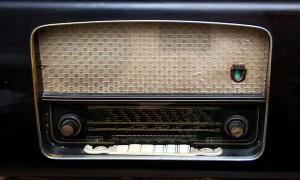I am writing several blog entries, documenting my experience with the Hitzer coal burning stove. The following is the third entry. Oh and by the way, names have been changed (sort of) to protect the innocent. I recommend starting at the begining with The Coal Chronicles – Book I and The Coal Chronicles Book II
Problem: The Hitzer is in the basement, the family lives in the floors above.
The heat isn’t going to do much good trapped in the basement. As readers might remember, our house came complete with electric baseboard heaters. These heaters are attached to the wall and wired to the 240 volt electric. There is no duct work in the house, making circulation of heated air a bit of a challenge.
The challenge is to move the heat into the upper floors of the house and return the cold air to the basement.
The house is a rather unique house, a split level overrun with stairs. This was a novelty to us, coming from the flatlands of Michigan’s Saginaw Valley.  The novelty has worn off now, since you have to go either up or down in most cases simply to use the bathroom. But, I digress.
The novelty has worn off now, since you have to go either up or down in most cases simply to use the bathroom. But, I digress.
The house has a very large patio door on the northeast side, or as I have heard it termed around here, a door wall. To provide heat in the area of the door wall there are two unique heaters in the floor. They are quite large and deep. I surmised that they were deep enough to go through to the basement, but could not verify this due to the finished ceiling. I had taken the grates off the heaters several times to retrieve lost toys and other droppings to the child’s “wishing wells.†I carefully removed the ceiling tile in the basement where I thought the heaters would be located. Sure enough, there was the bottom of the heater enclosure. The heaters are simply oil-filled elements in a steel enclosure, nothing to them. I have worked with high voltage electricity in a past life, so working on 240 volts does not bother me. I removed the wiring and with a bit of effort the enclosure came out of the hole. I was delighted to see that the resulting space was nicely framed with floor joists. After a bit of trim work in the basement ceiling I was golden.
I had taken the grates off the heaters several times to retrieve lost toys and other droppings to the child’s “wishing wells.†I carefully removed the ceiling tile in the basement where I thought the heaters would be located. Sure enough, there was the bottom of the heater enclosure. The heaters are simply oil-filled elements in a steel enclosure, nothing to them. I have worked with high voltage electricity in a past life, so working on 240 volts does not bother me. I removed the wiring and with a bit of effort the enclosure came out of the hole. I was delighted to see that the resulting space was nicely framed with floor joists. After a bit of trim work in the basement ceiling I was golden.
Here goes the great experiment. Will the heat rising from the basement be enough? Well, twenty four hours of watching the thermometer in the main level of the house revealed that further work needs to be done. The heating season had started so I needed to do something fast. I brought up a couple of box fans and placed them near the hole in the floor.  Fashioned a bit of a dog house out of cardboard, in a real Rube Goldberg style. Did some taping up and voila, heat is moving – sort of. Still need to get the cold air back into the basement.
Fashioned a bit of a dog house out of cardboard, in a real Rube Goldberg style. Did some taping up and voila, heat is moving – sort of. Still need to get the cold air back into the basement.
After surveying the house, I clearly needed the return to be on the side opposite the heating supply, but inconspicuous, and simple, I do not want to tear up my house. Again the house is a split level with plenty of stairs, one set of stairs is short and goes to the foyer at the front door. The patio door with the, now removed, heater is in the back of the house not far from the stove. This is where my son and I cut a hole to put a 2†x 9†register with a short duct to the basement.
So what do I have? The Hitzer putting out an enormous amount of heat, a pallet of coal. I have a heater removed, a hole in the floor, and a makeshift dog house with fans. I have a new hole in the floor at the front of the house with a short length of duct work and a register. This system is surprisingly efficient, and we managed to keep the house quite warm, with very little if any use of the electrics.
 That makeshift doghouse and fans looks awful, plus, I have a wonderful view to the north across the valley toward Wooster, which is now obstructed. No good. Besides, I come to find out it is not safe to have a hole in the floor, no fire stop. No good.
That makeshift doghouse and fans looks awful, plus, I have a wonderful view to the north across the valley toward Wooster, which is now obstructed. No good. Besides, I come to find out it is not safe to have a hole in the floor, no fire stop. No good.
This heater that I removed has a nice steel enclosure, if I could come across an old furnace blower that would move a considerable amount of heat. One weekend I was up to my folks’ house in Houghton Lake Michigan, and we were at a Habitat for Humanity ReStore in the area.  They happened to have a nice blower out of (I suspect) a large air conditioner. I cut a hole in the steel enclosure ,put it back into the hole and mounted the fan. After rewiring with something a bit more substantial than the residential grade extension cord that somebody else put on it, we turned it on. My goodness. did that thing move the air! One last hurdle, the blower was a bit noisier than I suspected. I took care of that with a carefully placed baffle over the blower.
They happened to have a nice blower out of (I suspect) a large air conditioner. I cut a hole in the steel enclosure ,put it back into the hole and mounted the fan. After rewiring with something a bit more substantial than the residential grade extension cord that somebody else put on it, we turned it on. My goodness. did that thing move the air! One last hurdle, the blower was a bit noisier than I suspected. I took care of that with a carefully placed baffle over the blower.


Now the house stays 68 to 72 degrees in the winter, and the family is happy. The maintenance of the stove is minimal. Most of all, the little wheel on the side of the house is not spinning nearly as fast as it used to.
We have been on a budget with the electric company, which means the payments for the year are spread out to reduce the hit during the cold months. Today we found out we are ahead and the electric company has reduced the budgeted payments considerably.
The stove has not been without challenges. In the next installment I will tell you all about the first firing, filling the coal chute, learning to shake the grates and the ash build-up around the edges of the bed of coals. I will also share the interesting fixes for these challenges































I’ve had a Hitzer insert for 5 years now and love it. The quality is second to none. Just the simple design of the door latch are appreciated after seeing some of the other designs used by other manufacturers. I will say that this model when burning coal is too strong for our house. I bought it to be used as a wood stove and it functions perfectly for that purpose with far more adjustability than when burning coal. This is because coal requires a certain amount of air flow – if you go below this point the coals will go out. The heat produced while keeping the coals glowing is more than my 1800 square foot 2 level home can handle. This model does not use a hopper, but can still hold around 80#. Burning wood, you can fit over an arm load of large split 20 inch long wood in this stove. This will allow 8 hour burns when turned up or 12 hours+ when burning moderately. The shaker grates and ash pan allow emptying while the stove is burning, which is something I’d never go without after getting so used to it. On this model the blowers have an automatic setting which turns them on only when the stove is hot. I like this feature as you can hear them turn off which tells you it’s time for stoking. The blowers are needed on this model since it’s an insert, but they do a great job and only use 80W of power combined.
Feel free to ask any questions.
Rob.
New Hampshire.
Rob, thanks for the comment.
So you know what kind of heat that stove can put out. As I said in an earlier post, the basement where the stove is located is generally over 90° F. I turn off the stoves blower and the basement manages to cool slightly away from the stove. Yesterday (without the stove blower on and the house blower running) the thermometer near the stove (about 4 feet away) was reading 86° F. The main level of the house generally hovers in the 68° to 72° area. The other night I forgot to turn the house blower back on and the house got down to 62° (this is when the electrics kick on).
The latest problem: my youngest daughter (almost three years old) has discovered the thermostats on the electric heaters.
My configuration is the stove lives in the downstairs which is a finished basement. There is a stairway 14 feet in front of the stove which allows a lot of the hot air to simply rise up. On very cold or windy days I put a small pedestal fan at the bottom of the stairs and it sends up enough warm air to keep the upstairs around 70°F.
The downstairs will always be around 80°F when the stove is cranked up. It’s nice to sit in front of for a little while, but gets hot quickly. The fan helps move this heat where it is needed.
I will say that being an experienced wood burner made it even harder to believe just how much hotter coal burns than wood – and it stays incredibly hot for hours without much change. Very impressive. Some day I’d like to put a small coal stove in my upstairs for decoration and primary heat.
Our house has the basement stairwell in the garage so allowing the heat to “wander up” the stairwell is not an option. We have our exercise equipment in the basement!
I agree with you about the heat output, our fireplace does not put out anywhere near the amount of heat that the Hitzer can. Like you say, it stays that way for a long time. Best of all, very little attention is needed.
Fill it, and enjoy. Shake it from time to time and empty the ash once a day.